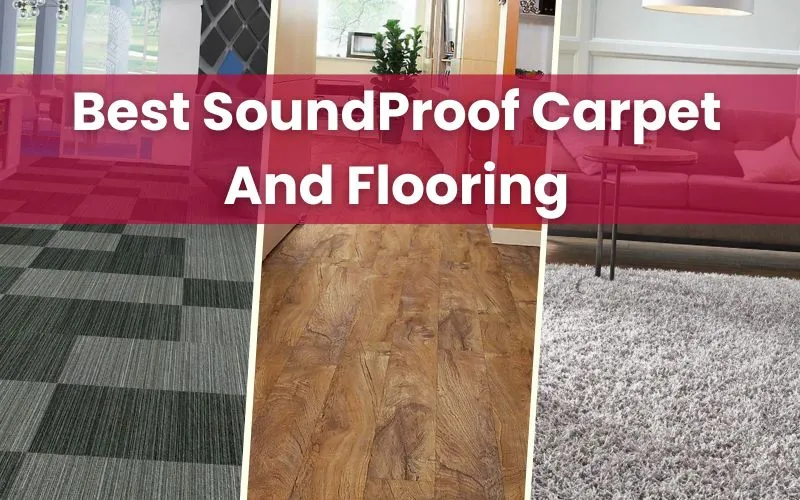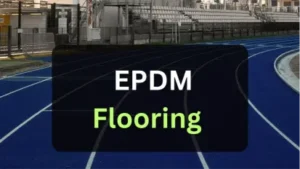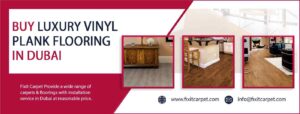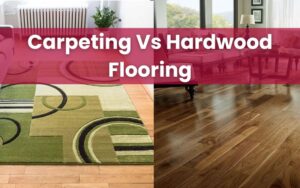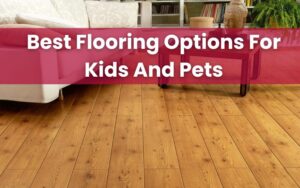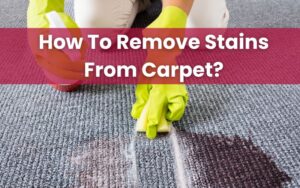Looking to reduce noise in your home or office? Installing soundproof carpets and flooring is an effective way to dampen sounds and create a quieter environment. The right materials can block airborne noise from footsteps, voices, TVs, etc., and impact noise from dropped objects.
When shopping for soundproof carpet and flooring materials, you’ll want to consider the material, density, thickness, and additional sound-deadening features. The best options will have a high STC (Sound Transmission Class) and IIC (Impact Insulation Class) rating to maximize noise blocking.
For complete room soundproofing, consider pairing your flooring with soundproof curtains on windows and walls. This layered approach blocks sound from multiple entry points and creates the quiet space you deserve.
Top 9 Soundproof Carpets and Flooring Materials to Reduce Noise
1. Wool Carpeting

Wool carpets made from dense wool fibers naturally absorb noise vibrations rather than reflecting sounds. The thick piled fibers muffle footsteps, voices, TV noise, etc. The stylish carpets are the best noise blocking, choose wool carpets with a high pile density.
Wool carpets with added thick padding are ideal for soundproofing. Look for a sturdy backing and pile at least 1/2″ thick. Wool carpeting helps soften noise in bedrooms, living spaces, media rooms, and offices.
2. Rubber Floor Tiles

Rubber is excellent for soundproofing because of its dense properties, which prevent noise transmission. Rubber floor tiles or rolls are commonly used in basements, laundry rooms, gyms, and playrooms.
Seeking high-quality recycled rubber is best. It provides great sound absorption and impact resistance. Rubber floors also resist water and damage while providing cushioning and comfort.
3. Mass Loaded Vinyl (MLV)

MLV has a high mineral content, making it dense and effective at blocking airborne and structural noise. Basic MLV is available in rolls, but there are also interlocking tiles. For floors, choose MLV tiles, which are easy to install and replace.
MLV flooring is thin yet blocks more noise than thicker carpets. It’s often installed under carpet or wood floors as an additional sound barrier. Bedrooms,, home theaters, and studios benefit from MLV underlayment.
4. Laminate Flooring

Laminate flooring is constructed of compressed fiberboard with a laminate top layer. It creates a dense, durable floor that reduces airborne noise transmission. Laminate absorbs sound rather than reflecting it like hard surfaces.
Look for laminate flooring with pre-attached foam or cork underlayment. The underlayment dampens impact noise from walking, moving furniture, etc. Laminate floors provide stylish, affordable soundproofing.
5. Carpet Padding

Adding a thick, dense carpet pad under your wall to wall carpet is an easy way to absorb more noise. The pad creates an additional barrier between the subfloors and the carpet surface. Opt for a pad with at least a 7/16″ thickness and over 6 lb density.
Carpet padding also makes floors more comfortable and insulated. Combine padding with a high STC-rated carpet for maximized sound absorption. Pad carpets in bedrooms, hallways, media rooms, etc.
6. Acoustic Floor Mat

Acoustic floor mats and round carpets are sound-deadening mats placed under flooring materials. They are thin, dense barriers made of recycled rubber or cork. When installed underneath flooring, they reduce both airborne and impact sound transmission.
Look for acoustic mats rated for excellent sound absorption and STC blocking. Cut mats to fit and install underneath laminate, carpet, tile, vinyl, and engineered wood flooring. Acoustic mats are great for multifamily homes and as mosque carpets options.
7. Fiber Flooring

Fibrous materials like wool carpets naturally absorb noise vibrations rather than reflecting sounds. The dense piled fibers muffle footsteps, voices, TV noise, etc. For the best noise blocking, choose carpets with a thick, high pile and sturdy backing.
Wool carpets with added padding are ideal for soundproofing. Area rugs like jute rugs, sisal rugs and sisal carepts also absorb noise well. Fibrous carpeting helps soften noise in bedrooms, living spaces, media rooms, and offices.
8. Acoustic Floor Tiles

Specialty acoustic floor tiles are engineered with sound-absorbing properties. They are constructed of noise-blocking materials like rubber, foam, and fiber. Acoustic tiles reduce echoes and noise transmission when installed on floors and ceilings.
Foam or fiber tiles work well for damping airborne noises. Density rubber tiles excel at blocking impact noise. Look for acoustic tiles with an NRC (Noise Reduction Coefficient) of 0.7 or above for the best sound absorption.
9. Cork Underlayment

Installing cork underlayment under your finished floor is a simple upgrade for peace. Cork absorbs vibrations and impact noise from footsteps, furniture scraping, dropped items, etc. It also insulates against airborne noise.
Cork underlayment is available in thin rolls for convenient installation underneath laminate, hardwood, vinyl and tile. Use acoustic caulk around the edges to seal sound leaks. Cork helps isolate noise between floor levels.
Choosing the Best Soundproof Flooring – What to Look For
When you want to make your home, apartment, or office quieter, choosing the right flooring is important. But there are so many options claiming to be soundproof.
Density
The heaviness of flooring is crucial in reducing sound. When materials are heavy, they don’t let noise vibrations pass through easily. When choosing flooring, aim for a weight of at least 2 psf. The best options are hard and heavy materials like concrete, rubber, and stone.
Thickness
Thickness directly correlates with noise-blocking ability – the thicker, the better. Thick flooring materials better absorb noise vibrations before they transmit to the room below. Aim for at least 1/4″ thickness, but 3/8″ or 1/2″ is ideal for maximum soundproofing.
High STC/IIC Ratings
Check the STC (Sound Transmission Class) and IIC (Impact Insulation Class) ratings of any soundproof flooring. The higher these numbers, the better the floor will perform in blocking airborne and impact noise. Look for STC and IIC ratings of at least 50, but 60+ is optimal.
Additional Noise Blocking Layers
Adding more layers boosts how much sound gets blocked. Floating floors, underlayment padding, and acoustic mats create additional barriers. Laminate flooring with pre-attached padding absorbs more noise than laminate alone. Using both carpet and pad is also more effective than just carpet.
Conclusion
Choosing a soundproof carpet or flooring material is an effective way to reduce noise at home or work. Focus on dense materials like cork, rubber, MLV, wool, acoustic tile, etc. Also, utilize noise-blocking underlayment under your finished floors.
Be sure to check the STC and IIC ratings when comparing products. The higher these numbers, the better the floor will perform for sound absorption and noise blocking. With the right soundproof flooring, you can enjoy quiet while keeping important noises out.
Fixit Carpet is the top rated supplier of custom carpets, outdoor carpets and flooring Dubai. I hope this guide was helpful for you to regarding how to remove old stains from carpet? Explore our blogs for additional tips on installation, as well as solutions to various related issues.
Read more:

